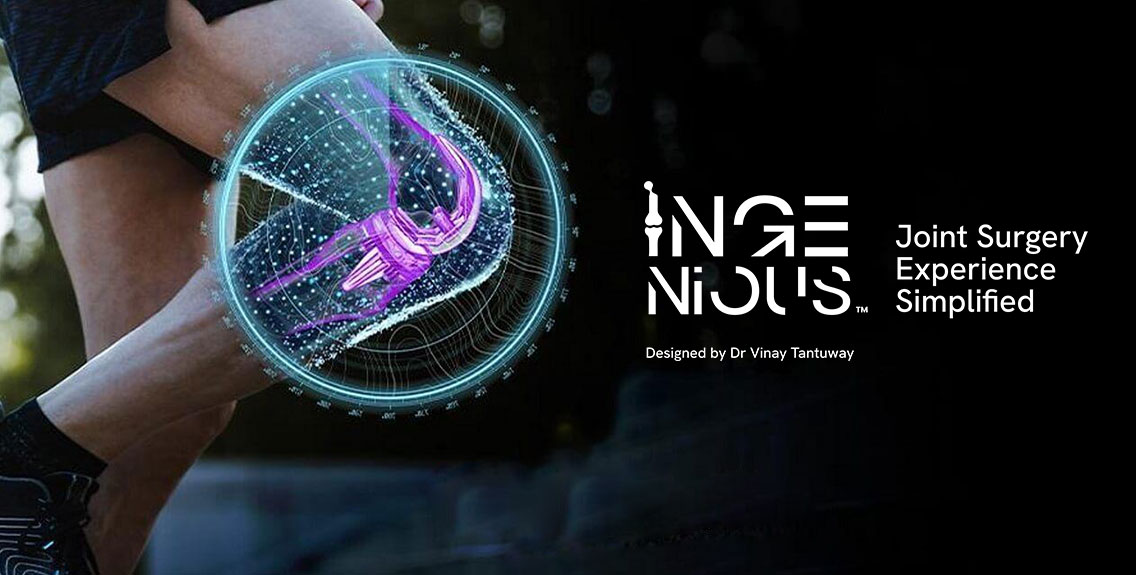The Ingenious technique for knee joint replacement is a highly advanced surgical approach designed by Dr. Vinay Tantuway, a renowned joint replacement surgeon.
The technique is aimed at achieving excellence in joint surgery while also minimizing the invasiveness of the procedure.

The knee joints articulate four bones: the femur, tibia, fibula, and patella. There are four compartments: The medial and lateral tibia femoral compartments, The femoral patella compartment, and the superior tibiofibular joint. The components of each of these compartments can suffer from repetitive strain, injury, or disease. So all these diseases are treated from the root by Dr. Vinay Tantuvay.
There are several surgical approaches to the knee joint, with the most common being the “peripatellar” incision. While technically easy for the surgeon and provides good exposure to the knee, this approach detaches one-third of the quadriceps muscle. The quadriceps muscle is the large muscle on the front of the thigh that attaches to the upper part of the kneecap. Even though the incision in the muscle and tendon is repaired at the end of the procedure, patients who undergo knee replacement through this approach tend to experience more pain. Additionally, the muscle activity of the leg pulls on the suture line in the muscle, and detachment of the muscle results in weakness. Patients with peripatellar incisions are much less likely to be able to lift their leg straight after surgery.
One of the key benefits of this technique is its focus on preserving and protecting the muscles surrounding the knee joint. This is important because the muscles provide strength and control, and play a crucial role in regaining motion after the surgery. By avoiding cutting or detaching the muscles around the knee, patients are likely to experience less pain, faster recovery, and a better range of motion.
Compared to other surgical approaches, such as the peripatellar incision, which detaches one-third of the quadriceps muscle, the Ingenious technique has a lower risk of muscle weakness and postoperative pain. Patients who undergo knee replacement surgery using the Ingenious technique are more likely to be able to lift their leg the day after surgery (straight leg raise), which is a key indicator of a successful surgery.
In summary, if you are considering knee joint replacement surgery, the Ingenious technique is a highly recommended option to consider. It is a minimally invasive approach that prioritizes muscle preservation and provides better outcomes for patients in terms of pain relief, motion, and recovery time.